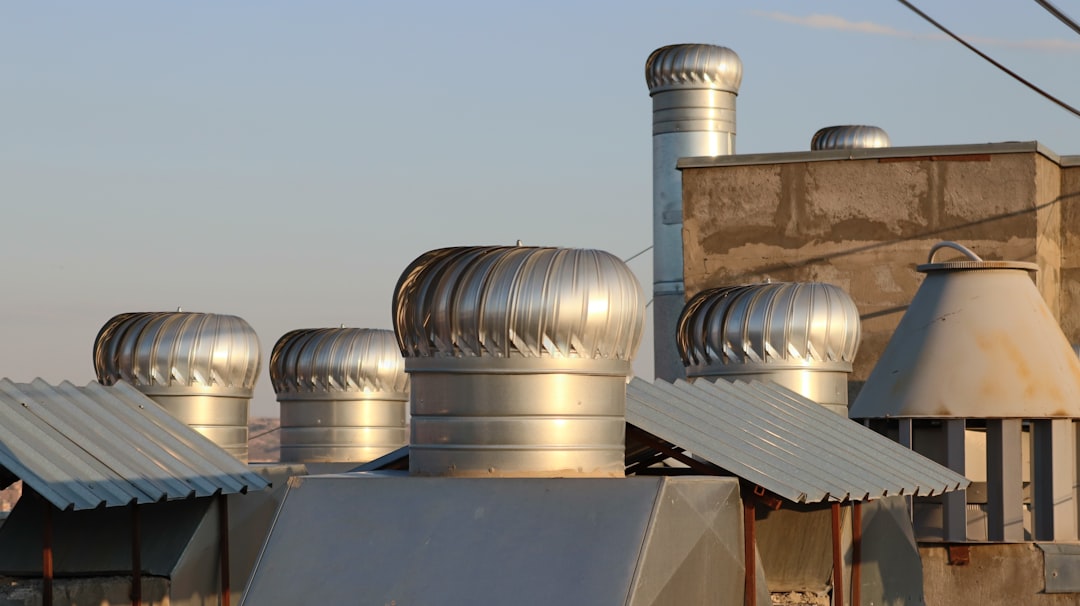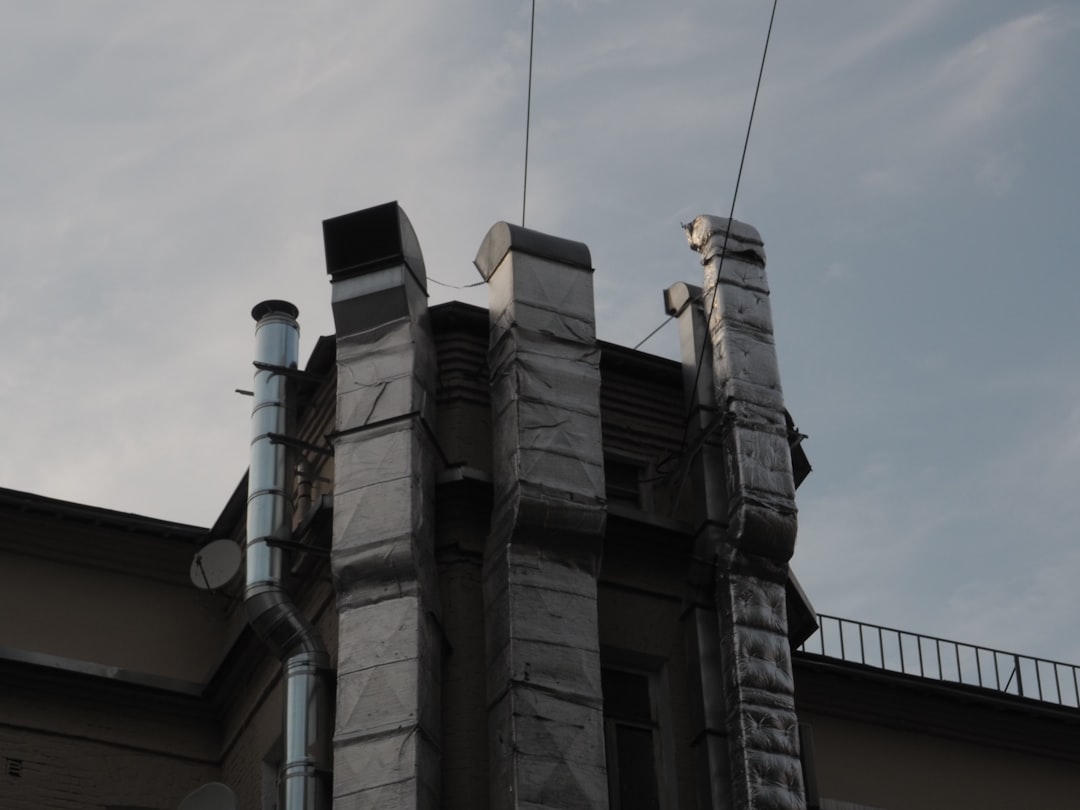

Engage prospects with a scan and streamline customer engagement with FREE QR code marketing tools by Sona – no strings attached!
Create a Free QR CodeFree consultation

No commitment

Engage prospects with a scan and streamline customer engagement with FREE QR code marketing tools by Sona – no strings attached!
Create a Free QR CodeFree consultation

No commitment
In today’s digitally driven world, QR codes have evolved from a novelty to a strategic powerhouse in bridging offline engagement with online action. For chimney cap installation services, QR codes represent an efficient, frictionless, and surprisingly effective way to streamline information delivery, appointment booking, and post-installation service requests without requiring an app download or complex setup.
Organizations in chimney cap installation services often find that clients crave speedy answers, such as accurate pricing, tailored recommendations, or professional support, when they encounter chimney-related concerns. Yet, traditional brochures, flyers, or business cards rarely lead directly to action or measurable outcomes, and even fewer provide a way to identify high-value prospects who might never submit a contact form. This often leaves contractors missing out on warm leads simply because they go unidentified or untracked through standard CRM processes. QR codes step in as a bridge, instantly connecting homeowners to digital resources, reviews, or expert consultations the moment interest peaks, helping to prevent potential opportunities from slipping away. For fast reputation-building, route scans to a review page using this Google reviews QR.
By reimagining physical customer touchpoints as digital gateways, QR codes empower marketing professionals and business decision-makers in chimney cap installation services to boost engagement, accelerate lead qualification, and capture tangible results. With the ability to identify interested visitors, trigger real-time follow-up tasks, and sync engagement signals, platforms like Sona QR make it easier to turn every offline interaction into a measurable, actionable asset. Let’s explore how you can tap this technology to deliver measurable benefits across the full client journey.

QR codes bridge the gap between on-site interactions and digital experiences, helping chimney cap installation services achieve real business goals like increased inquiries, faster bookings, and richer follow-up engagement. One persistent challenge is missing out on high-value prospects who research your services or engage with physical collateral but never take the step to fill out a form or make a call, resulting in missed sales opportunities and untracked demand.
To overcome this, map the moments when homeowners have the highest intent to act. For chimney services, this often happens after a storm, during seasonal maintenance reminders, or immediately following chimney inspections. Placing a QR code that connects directly to a self-serve estimator, a booking calendar, or a live-chat experience removes friction and turns interest into measurable pipeline. The key is to align QR code destinations with intent: cost estimates for early browsing, booking for ready-to-buy leads, and review or warranty registration for post-install customers. For simple data capture, consider a Google Forms QR.
Here’s how to elevate your client journey with QR codes:
Installers now fast-track service requests by placing QR codes on maintenance tags or invoices. With modern tools, every scan can append details to an existing contact, create a new lead, set a task for the sales team, and enter the homeowner into a relevant nurture sequence. This helps ensure that no lead is left behind at critical buying stages while providing a better customer experience from the first interaction.

Chimney cap installation services increasingly face digital disconnects. Printed estimates, postcards, or door hangers rarely translate to measurable leads or bookings, and even when they do, those who engage with these assets often remain invisible to your CRM. Without visibility, you cannot prioritize follow-up, nurture high-fit prospects, or understand which campaigns actually perform. Meanwhile, homeowners expect instant, self-serve access to reviews, cost calculators, maintenance tips, or nearby specialists without friction, delay, or the need to install new apps. For print campaigns, connect scans directly to landing pages with direct mail.
QR codes solve these challenges by creating a direct bridge between physical assets and digital actions. Instead of asking a homeowner to type a long URL, remember a phone number, or save a brochure, a single scan brings them to the right next step. For the business, every scan becomes a data point that informs strategy, enhances attribution, and accelerates sales follow-up. QR codes also enable dynamic content, so you can adjust offers seasonally, promote storm-readiness guides, or highlight limited-time discounts without reprinting.
Whether it is a flyer with a “scan for reviews” CTA or a finished installation tagged with a QR-enabled warranty registration, every code becomes a measurable, actionable touchpoint. You can surface new leads, accelerate qualification, and act before competitors have a chance to respond.

Different QR formats map to different goals in chimney cap installation services. Choosing the right format and destination ensures that each scan initiates the most relevant and valuable action. For example, an inspection report should launch a maintenance booking form, while a yard sign should open a quick quote estimator or a contact card to request a callback.
The most effective approach is to build a library of codes by purpose. Use dynamic codes for campaigns that change seasonally or by neighborhood, and static codes for evergreen resources that do not need revision. Centralized management helps your team update offers, track performance, and keep the funnel aligned with current demand.
Platforms that support all these formats in one place make it easy to experiment, iterate, and optimize based on analytics. A unified system reduces manual work, connects offline actions to digital follow-up, and ensures prospects are not lost as anonymous traffic.

Deploy QR codes wherever homeowners encounter your brand or services offline. Friction is highest at these moments because an interested homeowner often lacks an immediate, simple way to act. By placing QR codes on materials they already see, you convert interest into an action with a single scan.
Think through your service geography, seasonal patterns, and typical customer journeys. In many markets, early fall and spring see spikes in inspections and repairs. During these windows, prioritize QR placements that prompt immediate booking, such as direct mailers, yard signs, and vehicle wraps near active job sites. Layer in neighborhood-specific offers or educational content to lift engagement further.
With analytics, each placement can be tied to outcomes like bookings, reviews, and revenue. This visibility allows you to double down on the channels and locations that consistently deliver high-value clients.

Real-world use cases reveal how QR codes convert offline attention into results. By pairing the right QR format with the right context, you can simplify the homeowner experience and capture data that informs sales and marketing decisions.
Start with the moments you already influence. At project completion, homeowners are satisfied and likely to leave a review if prompted correctly. During evaluations or inspections, urgency is high and scan-to-call or scan-to-book can accelerate next steps. Lastly, during maintenance windows, scan-to-schedule keeps your pipeline full and reduces emergency calls.
Each use case transforms an offline interaction into traceable, actionable data. The result is a cleaner funnel, faster response times, and clearer justification for recurring campaign spend.
Every scan is a signal. It tells you something about the homeowner’s intent, context, or urgency. By deploying multiple QR codes across touchpoints, you can segment traffic automatically and deliver follow-up that matches where the person is in their journey, rather than relying on guesswork or spray-and-pray outreach.
Build your segmentation strategy around service categories, funnel stages, and locations. Adapt creative and offers to match the segment. For example, a homeowner who scanned a “storm damage assessment” code in a coastal neighborhood should see different follow-up than a homeowner who scanned a “preventative maintenance checklist” in spring.
Sona is an AI-powered marketing platform that turns first-party data into revenue through automated attribution, data activation, and workflow orchestration. To retarget based on real buyer signals, use Sona’s Playbook titled Intent-Driven Retargeting: Driving High-Impact Campaigns with First-Party Intent Signals.
QR codes unify your offline and digital marketing. Printed assets become gateways to analytics-rich destinations, and every scan creates a data trail you can use to optimize budgets and follow-up. For chimney cap installation services, this integration is especially important because so many interactions happen in neighborhoods, on job sites, and through local print materials.
Start by identifying the channels you already use and where you can add QR codes without redesigning everything from scratch. Pair each code with a benefit-driven CTA and a destination that respects the moment. For example, a vehicle wrap should open a one-tap call or quick quote, while a seasonal mailer should offer a calculator or promotion aligned with upcoming weather patterns.
By centralizing QR code creation and analytics, you can manage performance across channels and ensure every code has a clear job to do. The result is a connected offline-to-online funnel that captures demand as it emerges and nurtures it to conversion.
Use this checklist to plan, launch, and optimize your QR initiatives for chimney cap installation services. Each step ensures you connect offline interest to measurable digital outcomes and that you can improve results over time.
Start by defining a single, specific outcome. Common goals include boosting estimate requests from door hangers, increasing review volume after installs, or simplifying warranty registration. Choose a use case that addresses a clear friction point in your current customer journey, such as lack of attribution from print or slow responses to inspection findings.
Once you pick the outcome, outline the homeowner’s path from scan to completion. For example, a “scan for estimate” code should open a short, mobile-friendly form that captures address, cap type, and timeline, then presents a call-back option. Keep the experience under two minutes to minimize drop-off.
Decide between static and dynamic codes. Static codes are best for evergreen resources like installation guides that will not change. Dynamic codes are ideal for trackable campaigns that you expect to update, such as seasonal offers or neighborhood-specific promotions.
If you want performance data, retargeting, or the flexibility to change destinations after printing, choose dynamic. With dynamic codes, you can maintain the same printed asset but shift the destination as seasons change, storms occur, or promotions rotate, all while preserving scan history for attribution. Start creating QR codes for free.
Design with clarity and context. Include your logo in the QR design if the platform supports it, add brand colors in the frame, and place a direct CTA such as “Scan for a 2-minute quote,” “Scan to book,” or “Scan for your warranty.” Keep whitespace around the code for better readability and avoid busy backgrounds.
Test the code across multiple devices, distances, and lighting conditions. Print samples at the actual size you plan to deploy. Check scannability on curved surfaces like vehicle wraps and in outdoor conditions like sunlight or drizzle. If scans fail at an angle, increase the code size or contrast.
Roll out codes where homeowners are primed to act but typically go untracked: mailers, yard signs, completion paperwork, invoices, technician uniforms, and community bulletin boards. Use unique codes by channel and neighborhood so you can attribute results with precision.
Pair each placement with a benefit-focused CTA. For example, on a yard sign use “Scan for project photos and pricing.” On completion paperwork use “Scan to leave a review in 30 seconds.” On invoices use “Scan to schedule maintenance.” The clearer the promised outcome, the higher the scan rate.
Measure scan volume, conversion rates, and lead quality by placement. Look for patterns like high scan rates with low conversions, which may indicate poor landing page alignment or complex forms. Conversely, lower scan counts with high conversion may signal a high-intent channel worth expanding.
Iterate quarterly. A/B test landing page headlines, form lengths, and incentives such as “10 percent off maintenance if you book within 7 days.” Adjust code sizes, placements, and CTAs based on real-world performance. Centralize reporting so sales, ops, and marketing can act on insights together. For modeling trade-offs across channels, see Sona’s blog post titled Single vs. Multi-Touch Attribution Models.
Without end-to-end tracking, it is hard to prove which touchpoints create revenue or to act on warm signals quickly. Chimney cap installation services often invest in print and local awareness only to discover that results are difficult to measure. QR codes fix this by turning every scan into a data-rich event that can be tied to pipeline and bookings.
Adopt a scan-to-revenue framework. Start by capturing key metadata, then enrich contacts in your CRM. Next, connect scans to downstream events like form submissions, booked appointments, and closed jobs. Finally, compare performance across placements to identify your best-performing channels and refine your media mix. For a deeper primer, read Sona’s blog post titled The Essential Guide to Offline Attribution: Maximizing ROI Through Offline Channels.
Solving these analytics challenges ensures that your investment in QR codes leads to better decisions, more efficient marketing, and validated growth. For teams that want an out-of-the-box system, tools like Sona QR provide scan tracking, dynamic code management, and CRM integrations, while Sona.com links QR engagement to pipeline and revenue through attribution and identity resolution.
Once your first campaigns are live, take steps to deepen impact and consistency. Focus on attribution granularity, automation, staff training, and seasonal deployment. Small improvements to each area compound into stronger results across the entire funnel.
Align internal processes with the homeowner experience. If technicians know exactly how to introduce QR codes during visits and your office staff can answer questions that originate from QR traffic, you create a smoother path from scan to service.
By following these tips, you address common threats such as missed leads, slow outreach, and difficulty proving campaign performance. Over time, your QR system becomes a scalable growth engine that captures and converts demand efficiently.
QR codes have become far more than a shortcut for chimney cap installation services. They are a crucial strategy for turning every offline touchpoint, from flyers and yard signs to job completion forms, into a measurable, conversion-driven opportunity. Companies that leverage QR technology gain higher engagement, faster lead response, and a new level of connectivity across the customer journey. This approach converts moments of curiosity into actionable next steps, surfaces warm leads from anonymity, and reveals clear, actionable data so every scan can power growth and retention.
For marketing leaders and business professionals in chimney cap installation services, QR codes enable unparalleled visibility, real-time engagement, and seamless lead capture. By integrating this technology across your campaigns and assets, you unlock the power to turn every impression into a performance-driven outcome, accelerating growth, boosting client loyalty, and building a sustainable advantage in a competitive market.
QR codes have revolutionized chimney cap installation services by transforming traditional customer interactions into seamless, data-driven experiences. From simplifying access to installation guides and maintenance tips to enabling instant service requests, QR codes enhance customer satisfaction and streamline operations, turning every chimney cap into a smart touchpoint for engagement and trust-building. Imagine clients effortlessly scanning a code to schedule inspections or access warranty information, boosting convenience and loyalty.
With Sona QR, you gain the power to create dynamic, trackable QR codes that can be updated instantly without the need to reprint materials—ensuring your communication stays fresh and relevant. Every scan provides valuable insights into customer behavior, enabling you to optimize your marketing and service efforts while directly connecting engagement to revenue growth.
Start for free with Sona QR today and turn every chimney cap installation into an opportunity for stronger customer relationships and measurable business success.
Installing a chimney cap helps protect chimneys from weather damage, prevents debris and animals from entering, and supports maintenance that extends the cap's lifespan.
The article does not specify the exact cost to install a chimney cap but suggests using QR codes linked to cost estimators for accurate pricing information.
Choose a service by accessing digital resources such as reviews, expert consultations, and booking options via QR codes that provide verified information and streamline appointment scheduling.
The article focuses on marketing and client engagement rather than the installation process itself and does not detail the installation steps.
Maintaining your chimney cap is supported by using QR codes on maintenance tags that link to schedules and repair request forms, enabling timely service and prolonging cap lifespan.
QR codes connect offline marketing materials to online resources, enabling faster inquiries, bookings, review collection, and automated follow-up, which enhances lead tracking and customer engagement.
Place QR codes on print collateral, yard signs, vehicle wraps, maintenance tags, invoices, flyers, and direct mailers where homeowners are likely to engage and act quickly.
Useful QR code types include web links to estimators, forms for service requests, vCards for contact saving, SMS or email preloads for quick support, and review request links.
Track scan volume, conversion rates, lead quality, and tie scans to CRM data and outcomes like bookings and reviews to optimize marketing spend and improve ROI.
Regularly test and adjust code design, placements, CTAs, and landing pages while using analytics to identify high-performing channels and automate follow-ups to maximize engagement.
Use Sona QR's trackable codes to improve customer acquisition and engagement today.
Create Your FREE Trackable QR Code in SecondsJoin results-focused teams combining Sona Platform automation with advanced Google Ads strategies to scale lead generation

Connect your existing CRM

Free Account Enrichment

No setup fees
No commitment required

Free consultation

Get a custom Google Ads roadmap for your business






Launch campaigns that generate qualified leads in 30 days or less.
